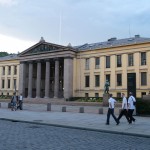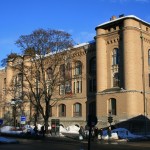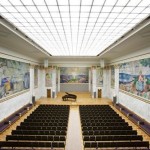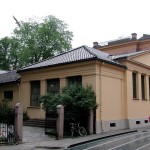W1 Two-day Workshop in Agent-based Modelling (28-29 March 2016) under the auspices of the CAA Special Interest Group in Complex Systems Simulation
Iza Romanowska, Joan Anton Barceló, Florencia del Castillo
More information here and in the leaflet
Abstract Agent-based modelling (ABM) has taken by storm disciplines from all corners of the scientific spectrum, from ecology to transport and social sciences and it is becoming increasingly popular in archaeology. Now it is your turn to give it go. Learn how to use the simulation software and explore how this popular complexity science technique can complement your research. This two-day workshop will provide an introduction to ABM using NetLogo – an open-source platform for building agent-based models, which combines user-friendly interface, simple coding language and a vast library of model examples, making it an ideal starting point for entry-level agent-based modellers, as well as a useful prototyping tool for more experienced programmers. The workshop will focus on explaining the process of developing a simulation as well as provide a practical hands-on introduction to NetLogo. It will consists of practical sessions demonstrating the basics of modelling with NetLogo through a set of worked examples and more theoretical sessions on the potential, methodology, and challenges of model building in archaeology. A ‘drop-in’ clinic will run in parallel for anyone who would like to consult their ideas for a simulation, needs help developing a model, or would like directions towards relevant resources. Two days of practical sessions, short presentations and group tasks will arm the participants with a good understanding of the process of developing a simulation including such topics as the epistemology of the method, common pitfalls and techniques to deal with them. The practical skills gained include basing programming skills in NetLogo such as control statements, lists, variables etc, as well as a familiarity with NetLogo extensions: GIS, R, and networks. Provisional Plan:
Day 1 – morning session Introduction to modelling: why model?, the difference between a model and a simulation, potential and limitations of the method; First Steps in NetLogo: hands-on tutorial in basic NetLogo features.
Day 1 – afternoon session Group exercise: build your own archaeological simulation; Drop-in session: consultations with a modeller.
Day 2 – morning session Model development step by step: finding research questions, defining the ontology, coding, testing, parameterisation, experiment design, dissemination; Intermediate NetLogo: local and global variables, control statements, lists.
Day 2 – afternoon session NetLogo extensions: GIS, R, networks, Behavioural Space; Guidelines for good practice in computational modelling.
To secure a place please send an email to i.romanowska@soton.ac.uk expressing your interest and describing your background (please note that previous experience in coding or modelling is not required). Please note that places are limited and early applications will be given preference.
W2 Introduction to exploratory network analysis for archaeologists using Visone
Track Workshops 09:00 – 12:00
Daniel Weidele, Tom Brughmans
Abstract Network science techniques offer archaeologists the ability to manage, visualise, and analyse network data. Within different archaeological research contexts, network data can be used to represent hypothesised past social networks, geographically embedded networks like roads and rivers, the similarity of site assemblages, and much more. A large number of software programs is available to work with network data. Visone is one of them and offers a number of advantages: • Free to use for research purposes • A user-friendly interactive graphical user interface • Innovative network visualisations • Exporting publication-quality raster and vector files • The incorporation of statistical modelling techniques This workshop introduces the basics of network data management, visualisation and analysis with Visone through practical examples using archaeological research questions and datasets. The workshop is aimed at archaeologists with no required previous experience with network science. Participants should bring a laptop with Visone installed (download Visone: http://visone.info/ ) Maximum 20 participants.
W3 Improving Presentation Skills 09:00 – 17:30
CAA SC
Especially for early-career researchers, presenting a paper at an international conference like CAA can be very challenging. Effectively communicating a piece of research in an oral presentation, even to interested peers, is never easy. Personal style, selection of subject matter, choice of presentation material, language barrier and differences in academic culture can all stand in the way of getting the message across. And unfortunately, constructive feedback is often very difficult to obtain.
In this workshop, the CAA SC wants to offer presenters at CAA the opportunity to practice their paper and receive targeted feedback on their presentation in a 30 minute session. Participants will first present their papers to each other, and to a small group of experienced presenters. These will then give feedback on the quality of the presentation, and where necessary provide guidelines for improvement, in a supportive atmosphere.
Participation is limited to 16 persons; preference will be given to first-time presenters and young researchers.
W4 Photogrammetry in archaeology: introduction to applications and practices for novices 12:30 – 17:00
Erik Kjellmann, Magnar Mojaren Gran
Photogrammetry has become a more and more common tool in the archaeologists toolkit, but is still the cause for concern for many regarding its applications and practices. In this workshop you will be introduced to ways of utilizing photogrammetry as a plan and section documentation methodology, as well as good practices for photogrammetry in general. There will be a practical part where the participants can learn how to use photogrammetry as field documentation.
If you wish to participate in the practical part of the workshop it is required that you bring your own camera and laptop. It is recommended that you have a fairly powerful laptop and a good camera with ability to take raw images. It is also required to have Agisoft PhotoScan Professional installed. If you do not have a license and do not wish to purchase it, you can go to http://www.agisoft.com/downloads/request-trial/ and get a 30-day free trial. To fully take advantage of the workshop it is also recommended that you have a GIS software available and have basic knowledge of it.”
W5 3D – Drones in Archaeology 10:00 – 13:00
Håkan Thorén
It has always been popular among archaeologists to have a bird’s-eye view of ancient sites. Over the last years the combination of drones and modern photogrammetry software have given possibilities not only to view sites from above but also make ortophotos and 3D-models of them. The workshop will give a lot examples of how drones have been used in archaeology.






